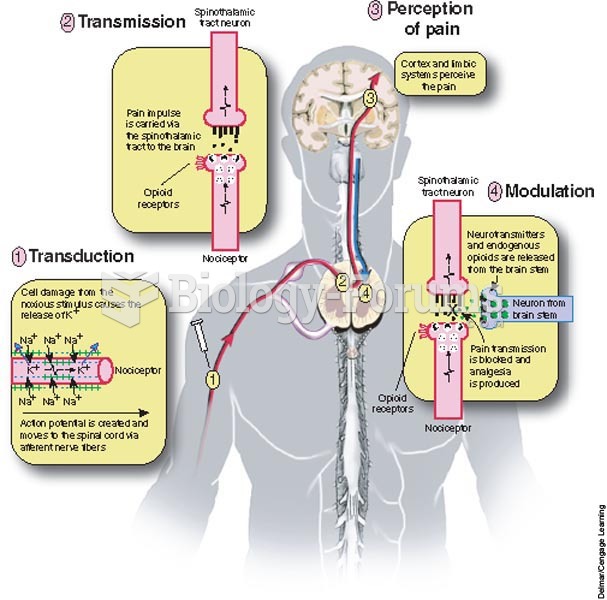|
|
|
During pregnancy, a woman is more likely to experience bleeding gums and nosebleeds caused by hormonal changes that increase blood flow to the mouth and nose.
Approximately 500,000 babies are born each year in the United States to teenage mothers.
More than 30% of American adults, and about 12% of children utilize health care approaches that were developed outside of conventional medicine.
A serious new warning has been established for pregnant women against taking ACE inhibitors during pregnancy. In the study, the risk of major birth defects in children whose mothers took ACE inhibitors during the first trimester was nearly three times higher than in children whose mothers didn't take ACE inhibitors. Physicians can prescribe alternative medications for pregnant women who have symptoms of high blood pressure.
The B-complex vitamins and vitamin C are not stored in the body and must be replaced each day.
 Examples of Scenarios Involving Nonmoral, Impersonal Moral, and Personal Moral Judgments from the St
Examples of Scenarios Involving Nonmoral, Impersonal Moral, and Personal Moral Judgments from the St
 In 2013, Americans learned that the federal government massively surveys their phone calls and e-mai
In 2013, Americans learned that the federal government massively surveys their phone calls and e-mai





